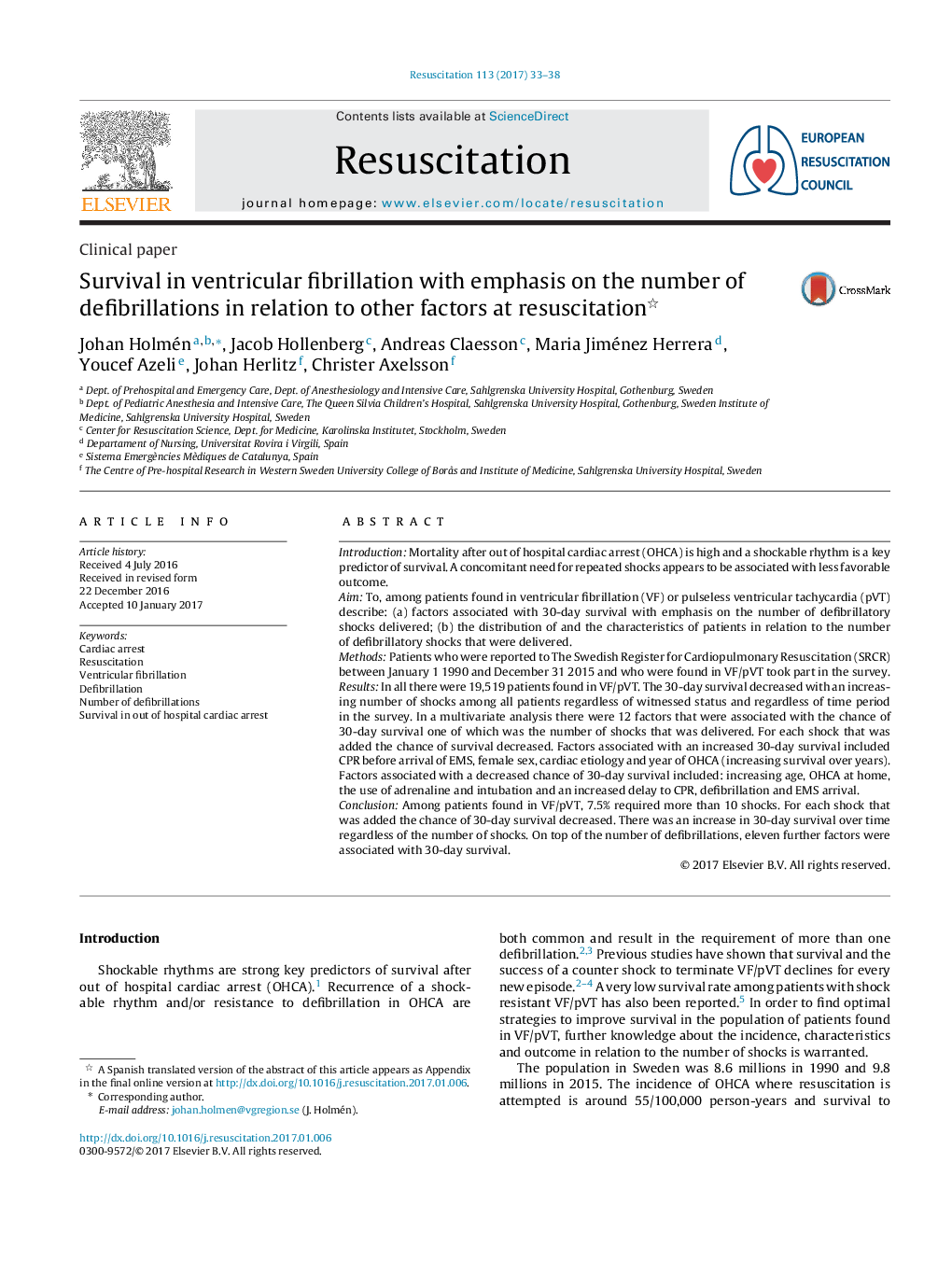| کد مقاله | کد نشریه | سال انتشار | مقاله انگلیسی | نسخه تمام متن |
|---|---|---|---|---|
| 5620040 | 1578971 | 2017 | 6 صفحه PDF | دانلود رایگان |
IntroductionMortality after out of hospital cardiac arrest (OHCA) is high and a shockable rhythm is a key predictor of survival. A concomitant need for repeated shocks appears to be associated with less favorable outcome.AimTo, among patients found in ventricular fibrillation (VF) or pulseless ventricular tachycardia (pVT) describe: (a) factors associated with 30-day survival with emphasis on the number of defibrillatory shocks delivered; (b) the distribution of and the characteristics of patients in relation to the number of defibrillatory shocks that were delivered.MethodsPatients who were reported to The Swedish Register for Cardiopulmonary Resuscitation (SRCR) between January 1 1990 and December 31 2015 and who were found in VF/pVT took part in the survey.ResultsIn all there were 19,519 patients found in VF/pVT. The 30-day survival decreased with an increasing number of shocks among all patients regardless of witnessed status and regardless of time period in the survey. In a multivariate analysis there were 12 factors that were associated with the chance of 30-day survival one of which was the number of shocks that was delivered. For each shock that was added the chance of survival decreased. Factors associated with an increased 30-day survival included CPR before arrival of EMS, female sex, cardiac etiology and year of OHCA (increasing survival over years). Factors associated with a decreased chance of 30-day survival included: increasing age, OHCA at home, the use of adrenaline and intubation and an increased delay to CPR, defibrillation and EMS arrival.ConclusionAmong patients found in VF/pVT, 7.5% required more than 10 shocks. For each shock that was added the chance of 30-day survival decreased. There was an increase in 30-day survival over time regardless of the number of shocks. On top of the number of defibrillations, eleven further factors were associated with 30-day survival.
Journal: Resuscitation - Volume 113, April 2017, Pages 33-38
